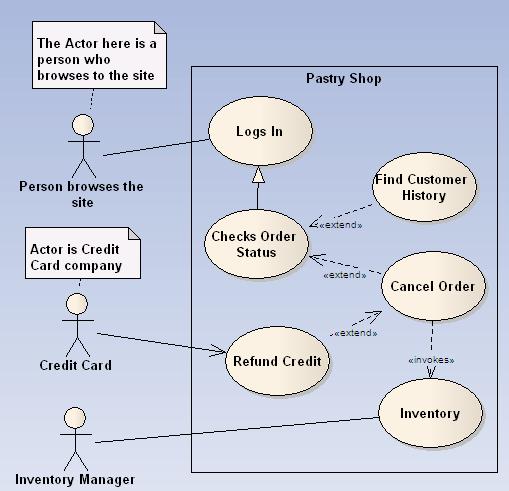The Use Case Model
The Use Case model is the most fundamental way of visualizing the interacting parts of the business or site.
Use cases have three parts, Actors, Use Cases and the System boundary. Actors can be people, other software, machines anything outside of the system (outside of the System boundary) that uses the system. The use case describes what occurs when and Actor creates an event that the system receives and events that are output as a result. The rectangle is the System boundary. In terms of a web site the system boundary is the web site itself or one web page or one discrete function like taking an order. If there is a database the system uses, the database could be an Actor that is external to the web site. The suppliers of the web site are external to the System boundary, so would be the credit card verification system, a service that the pastry site engaged. Various managers and department are actors too. The Use Case model is a functional model, it displays functions of a system without getting into detail about the software.
In a very understandable article by Robert Martin posted on the Martin Jeckle (listed on the sidebar) "Indeed, for a complex system, the
number (of Use Cases) can reach into the thousands. The complete functionality of the system can be described in use cases like this.This makes use cases a powerful analysis tool."
Notice there need be no extra explanations for this model. It is self explanatory!
© Copyright 2008, Lonnie Percent The information provided in this site is for informational purposes only. The information is provided “as is” with in implied or expressed warranty for accuracy. The content within may be distributed for non-commercial and educational purposes only.
